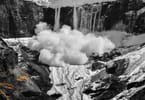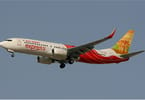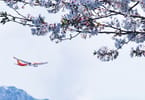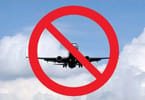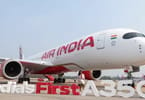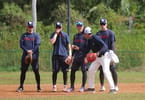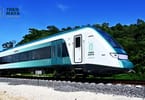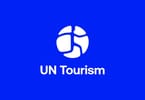ZAMBIA (eTN) – After writing an article about the Blue Lagoon National Park, I was recently sent an article by the Blue Lagoon Trust. Blue Lagoon and Lochinvar National Parks are suffering from the same fate of lack of decision-making by the Zambia Wildlife Authority (ZAWA). Both parks need private investors to bring them back to life. There are serious issues in both parks – poaching, invasive plants, lack of natural flooding by the Kafue River because of the Itezhi-Tezhi Dam. Now that ZAWA is being reorganized we can only hope that something will be done for this Ramsar Site which has tremendous possibilities for tourism and which Zambia has agreed to protect. In any case, the information received about the Blue Lagoon Trust is worth sharing.
Blue Lagoon National Park is the closest national park to Lusaka, only 110 kilometers apart, or a one-and-a-half-hour drive from the capital, so it is perfectly located for day trips or leisurely weekends away from the hustle and bustle of the capital city.
It is the ideal venue for birders. You can see within the swamps of the Kafue flats, very large concentrations of resident and migratory water birds occurring, as well as large breeding colonies. The species spectrum varies greatly depending on the season and the water level, but species which are often found in significant numbers include pelican, common Squacco heron, cattle egret, black egret, open bill stork, glossy ibis, Egyptian goose, and spur-winged goose.
This is also a great area for seeing the wattled cranes, which are a wetland-dependent species. They are also an endangered species, which suggests serious implications for the health of our wetlands. The park is also well known for its high diversity of breeding raptors. Vultures are particularly numerous, as are African fish eagles and tawny eagles.
Apart from the birdlife there are also the endemic Kafue Lechwe, which are found only in the Blue Lagoon National Park and its neighbor, Lochinvar National Park. They are semi-aquatic animals and are regularly seen grazing in shoulder-deep water. At one time the Kafue Lechwe numbered in the tens of thousands, but there is no recent data, and one wonders if today’s figure would stand in the thousands. Usually, when visiting the park, you can see Lechwe at a distance, where only a few years ago they were seen close to the lodge and the Causeway (a 5 km raised road reaching deep into the flood plain).
Water Python and Monitor Lizards are commonly seen on the Causeway. If you are really lucky you can also see Buffalo and Zebra, Kudu, Bush Buck, Reed Buck, and Oribi, as well as Hyena, Serval Cat, and a myriad of raptors, the principal predators of the Blue Lagoon National Park.
Blue Lagoon National Park was established in 1976. It was donated to the nation by Ronald and Erica Critchley, who owned a ranch on the land, and who had, themselves, a great interest in preserving wildlife. For many years after its establishment, Nakeenda Lodge, the Critchleys’ former home, was used as a hunting lodge, and the land became a training ground for the defense services. A landing strip was created for ease of access for both hunters and the military, which still has the potential to be opened up once more for the tourist industry.
In August 1991, the Kafue Flats ecosystem, including Lochinvar National Park and Blue Lagoon National Park, was declared a Ramsar site. The Ramsar convention’s mission is “the conservation and wise use of all wetlands through local, regional, and national actions and international cooperation, as a contribution towards achieving sustainable development throughout the world.”
In accordance with Ramsar’s mission, management plans have been drawn up to combat poaching and over-fishing, as well as the incursion of the invasive plant species Mimosa Pigra, which has its origins in South America. However, it would appear that these plans are still in their draft format, and while they await a concerted effort by the various stakeholders to put them into action, Mimosa Pigra flourishes in Lochinvar National Park and is already beginning to encroach into the Blue Lagoon National Park.
In addition to this there is also no coordination between Zesco and the Zambia Wildlife Authority to monitor the flow of water from the Itezhi-Tezhi dam to ensure that the wetlands maintain the unique balance necessary to conserve the ecosystem. One example of the negative impact a lack of water control has is the lack of nutritious grasses that the Lechwe feed on. This, in addition to the persistent poaching and general neglect, is endangering the endemic species of Kafue Lechwe as well as the other flora and fauna.
The local community has seen no benefit from investment in the local area and, due to a lack of education in environmental and conservation issues, has itself contributed to the decline.
In an attempt to redress the balance and save the park, the Blue Lagoon Trust (BLT) was established as a charitable, membership-based, non-governmental organization. Their aim is to work with the local communities bordering the Blue Lagoon National Park in order to raise the awareness of conservation and environmental issues within the local area, with particular emphasis on the national park itself. They also wish to facilitate sustainable working practices within the local community, encourage the wise use of resources, and improve the local amenities and, ultimately, the lives of the local people. To work with the local communities will improve the national park’s chances of survival.
BLT is very keen to work with the stakeholders within the national park as well, in order to ensure its rehabilitation. Today, wetland habitat is the fastest-disappearing ecosystem in the world and, as such, enormous and sustained efforts must be made to conserve it. This can only be achieved through strenuous and coordinated efforts between the interested organizations and stakeholders in the Blue Lagoon region.
For tourists, the current facilities available to them at the park consist of Nakeenda Lodge, the concession for which was granted to a Zambian investor in July 2010. It would be interesting to know the terms of the concession, as, up to now, the only improvements made to the lodge are a slap-dash paint job to the walls. No other form of investment seems visible. Nakeenda Lodge remains in a sad state of disrepair and degeneration. There are apparently four staff members employed to look after the lodge, who state they have not been paid since December last year, which appears to be the last occasion on which the concession holder visited the lodge. This seems to be an abuse of trust and while nothing is done about it, the roads into the park continue to remain full of pot-holes, termite mounds, and overgrown grasses and shrubs. The only way tourists can stay at the lodge is to bring their own camping equipment, along with everything required for overnight stays, including their own supply of water. The ablutions are not normally working as the small generator used to pump water into the tank is often broken down or without fuel. The tank leaks, so any water pumped usually drains out overnight. As an addition to this article, I am told the Nakeenda Lodge has now been completely abandoned.
It is imperative that ZAWA takes this responsibility seriously and ensures that a suitable investor be found to ensure the establishment of a fully-working lodge and campsite, with the roads both to the park, as well as within it, improved and the loops and airstrip opened up once more. This in itself would bring opportunities to the local community and would raise awareness among the wider society of just what needs to be done to conserve this unique area. The park has the potential to provide a contrast to other parks and areas within Zambia, with its vast flat floodplain, and would create an opportunity for both the local and international community to appreciate the differences in both landscape and wildlife that exist within the country.
WHAT TO TAKE AWAY FROM THIS ARTICLE:
- Blue Lagoon National Park is the closest national park to Lusaka, only 110 kilometers apart, or a one-and-a-half-hour drive from the capital, so it is perfectly located for day trips or leisurely weekends away from the hustle and bustle of the capital city.
- However, it would appear that these plans are still in their draft format, and while they await a concerted effort by the various stakeholders to put them into action, Mimosa Pigra flourishes in Lochinvar National Park and is already beginning to encroach into the Blue Lagoon National Park.
- If you are really lucky you can also see Buffalo and Zebra, Kudu, Bush Buck, Reed Buck, and Oribi, as well as Hyena, Serval Cat, and a myriad of raptors, the principal predators of the Blue Lagoon National Park.



